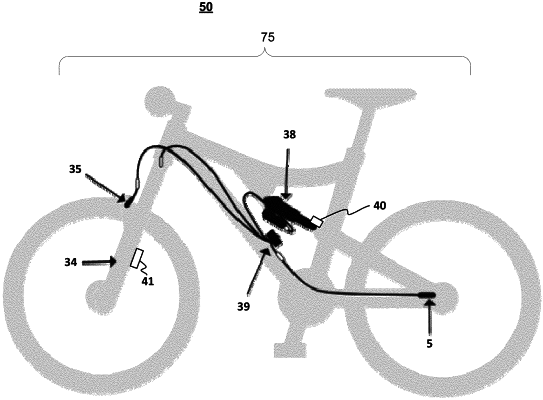| CPC G07C 5/006 (2013.01) [G07C 5/0825 (2013.01)] | 6 Claims |

|
1. A system comprising:
a mobile computing device, said mobile computing device comprising:
a memory;
a display;
at least one graphical user interface;
at least one processor to:
initiate a connected component platform (CCP);
receive user specific information; and
develop an active valve suspension tune comprising a number of performance range adjustable settings from said user specific information, said user specific information selected from the group consisting of: a physical information and a skill level information;
an active suspension of a vehicle, said active suspension comprising:
a suspension controller to:
receive said active valve suspension tune from said CCP; and
implement said active valve suspension tune, wherein said CCP reduces a processing requirement of said suspension controller which increases a battery life of said suspension controller;
a time of flight sensor configured to generate terrain information;
at least one sensor to generate sensor data related to said active suspension, said sensor data further providing information selected from the group consisting of: pitch, roll, yaw, speed, acceleration, and deceleration; and
at least one damping assembly comprising at least one connected component;
wherein said suspension controller is further configured to:
repeatedly receive said sensor data from said at least one sensor;
repeatedly receive said terrain information from said time of flight sensor;
repeatedly evaluate said sensor data;
repeatedly evaluate said terrain information;
automatically adjust, at said at least one connected component, one or more of said performance range adjustable settings of said active valve suspension tune based on a result of said repeated evaluation of said sensor data and said terrain information;
receive said sensor data provided from said at least one sensor;
obtain a performance specification for said at least one connected component;
evaluate said sensor data in light of said performance specification to generate a sensor data evaluation;
compare said performance specification of said at least one connected component with said sensor data evaluation;
develop a personalized performance evaluation of an actual performance of said at least one connected component using said performance specification and said sensor data evaluation;
provide said personalized performance evaluation of said at least one connected component to said user; and
present, via said display of said mobile computing device, a recommended setup change for said at least one connected component.
|